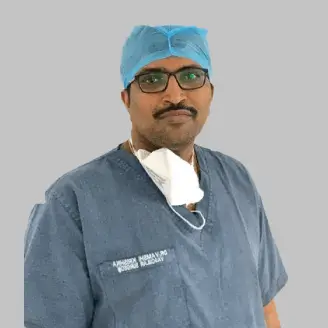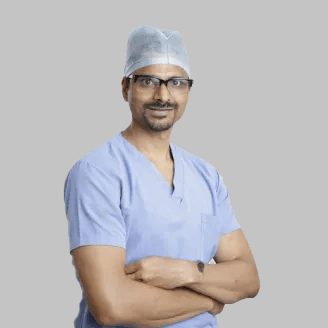-
Doctors
-
Specialities & Treatments
Centre of Excellence
Specialties
Treatments and Procedures
Hospitals & Directions HyderabadCARE Hospitals, Banjara Hills CARE Outpatient Centre, Banjara Hills CARE Hospitals, HITEC City CARE Hospitals, Nampally Gurunanak CARE Hospitals, Musheerabad CARE Hospitals Outpatient Centre, HITEC City CARE Hospitals, Malakpet
HyderabadCARE Hospitals, Banjara Hills CARE Outpatient Centre, Banjara Hills CARE Hospitals, HITEC City CARE Hospitals, Nampally Gurunanak CARE Hospitals, Musheerabad CARE Hospitals Outpatient Centre, HITEC City CARE Hospitals, Malakpet Raipur
Raipur
 Bhubaneswar
Bhubaneswar Visakhapatnam
Visakhapatnam
 Nagpur
Nagpur
 Indore
Indore
 Chh. Sambhajinagar
Chh. SambhajinagarClinics & Medical Centers
Book an AppointmentContact Us
Online Lab Reports
Book an Appointment
Consult Super-Specialist Doctors at CARE Hospitals

Vascular & Non-Vascular Hepatobiliary Interventions
Vascular & Non-Vascular Hepatobiliary Interventions
Vascular & Non-Vascular Hepatobiliary Interventions
Interventional radiology is a fast-growing area of medicine. Interventional radiologists use minimally invasive procedures and image guidance to perform surgeries. In medicine, interventional radiology procedures often replace surgical procedures. They are easier for patients as they do not involve large incisions, risk, less pain and offer a short recovery period.
Interventional radiologists use their expertise to read X-rays, ultrasound and other medical images to guide a small tube or catheter through the blood vessels to treat the disease. These procedures are less invasive and costly as compared to conventional surgeries.
At CARE Hospitals, there is a wide range of liver and biliary intervention procedures, both therapeutic and diagnostic. We most commonly use CT guidance or ultrasound guidance to diagnose the disease.
Types of hepatobiliary interventions
-
Vascular interventions
-
Non-vascular or percutaneous interventions
Vascular Interventions
It commonly includes the intervention of the Transjugular intrahepatic portosystemic shunt (TIPS). It is a treatment for portal hypertension. In this, direct communication is established between a branch of the portal vein and the hepatic vein. This allows the portal flow to pass through the liver. The intervention of the TIPS is recommended for the following conditions:
-
For acute variceal bleeding.
-
Hepatic hydrothorax
-
Hepatorenal syndrome
-
Hepatic malignant compression.
The procedure is not performed if the patient has the following conditions.
-
Right heart failure
-
Cystic hepatic disease
-
Polycystic kidney disease
-
Hepatic malignancy
Every surgical process has some complications. The risks associated with the intervention of the TIPS are as follows:
-
Gall bladder puncture
-
Acute kidney injury
-
Hepatic infarction
Procedure
At CARE Hospitals, we follow the given procedure for TIPS.
-
Ultrasound images are used to insert a vascular sheath into the right atrium for measuring pressure in the beginning.
-
An angiographic catheter is inserted into a targeted hepatic vein and hepatic venography is performed.
-
A curved TIPS puncture needle is inserted into the hepatic vein with its surrounding sheath.
-
In the case of the right hepatic vein to right portal vein beach stent, the TIPS is rotated anteriorly and inserted inferiorly through liver tissues to the targeted site.
-
A portal venogram is performed to confirm portal vein cannulation.
-
A guidewire is inserted through the TIPS needle in the splenic or mesenteric vein to ensure portal vein access.
-
The angiographic catheter is inserted in the portal vein for pressure management.
-
A balloon catheter is used to dilate the space through liver tissues.
-
A vascular sheath is inserted through the space in the portal vein branch.
-
Portal pressures are measured to get the desired reduction in the portosystemic gradient.
-
Venography is performed to look for complications.
Percutaneous (Non-vascular) Interventions
It includes percutaneous liver biopsy. It is done either with the use of ultrasound or CT image guidance. This is an accurate and reliable method to acquire liver tissues for disease assessments. Liver biopsy is further classified into;
-
Non-focal or non-targeted liver biopsy
-
Focal or targeted liver biopsy.
People suffering from the following conditions can go for percutaneous interventions.
-
Cirrhosis
-
Non-alcoholic fatty liver disease (NAFLD).
-
Non-alcoholic steatohepatitis.
-
Primary biliary cirrhosis
-
Abnormal liver functions
-
Hepatic storage disorders like Wilson disease and hemochromatosis.
-
Indeterminate liver lesion.
-
Liver metastasis
The procedure is not performed under the following circumstances.
-
Uncooperative patient
-
Abnormal coagulation indices
-
Ascites
-
Extrahepatic biliary obstruction
The complications or risks associated with the liver biopsy are listed below:
-
Pain
-
Infection
-
Bile leakage
-
Catheter blockage
Procedure
The procedure of Liver Biopsy followed by the doctors of CARE Hospitals is given below:
Before Procedure
-
The doctors take a written and signed consent form from the patient.
-
Before getting started with the technique, doctors assess the patient by performing laboratory tests like Complete Blood Count (CBC) test and by seeing the coagulation profile.
During Procedure
-
Ultrasound is the technique approached in guiding the liver biopsy.
-
Before the procedure, the liver is assessed with ultrasound to determine the entry point and position of the needle.
-
A wedge is used behind the patient's back for oblique positioning.
-
The marking of the entrance point on the skin helps in cleaning and dressing the skin.
-
The doctors then monitor the place with the help of haemodynamic monitoring.
-
During this stage, a time-out is performed.
-
To ensure asepsis, the skin site is draped and prepped.
-
Local anaesthesia is permeated under the skin abdominal wall.
-
An entrance point is made with the help of a scalpel.
-
The freehand technique is used in which the needle is advanced in the guidance of ultrasound during the biopsy.
-
An ultrasound examination for perihepatic haemorrhage is performed after the procedure.
After Procedure
-
After the procedure, the patient is kept under observation and complete bed rest is advised to him.
-
Active questioning regarding the pain and bleeding of the patient is done after every half an hour.
-
During this observation period, the doctors get ample opportunity to identify and treat any complication that arises after the completion of the procedure.
-
The patient is discharged when there are stable observations. There should be no evidence of instability of haemodynamic, pain, shortness of breath and bleeding while giving discharge to the patient.
How Can CARE Hospitals Help?
The experienced team of doctors at the CARE Hospitals use modern and advanced surgical procedures for Vascular and Non-vascular hepatobiliary Interventions. We follow international treatment protocols to provide the best results to the patients. The trained staff provide end-to-end care to the patients for their better and fast recovery. The hospital also furnishes the patients with personalised treatment options and uses minimally invasive procedures during their treatment.
Our Doctors
-

Dr. Tarun Gandhi
MS, FVES
Vascular & Endovascular Surgery
View More -

Dr. P C Gupta
MBBS, MS, FICA, FIVS (Japan)
Vascular & Endovascular Surgery
View More -

Dr. Ashish N Badkhal
MBBS, MS, MCh
Vascular Surgery
View More -

Dr. Ashok Reddy Somu
MBBS, MD, FVIR
Vascular & Interventional Radiology
View More -

Dr. B. Pradeep
MBBS, MD, DNB, FRCR CCT (UK)
Vascular & Interventional Radiology
View More -

Dr. Gnaneswar Atturu
MBBS, MS, DNB, MRCS, FRCS, PgCert, Ch.M, F.I.P.A, MBA, PhD
Vascular & Endovascular Surgery
View More -

Dr. Mustafa Razi
MBBS, MD
Vascular & Interventional Radiology
View More -

Dr. N. Madhavilatha
MBBS, MS, PDCC
Vascular & Endovascular Surgery
View More -

Dr. Radhika Malireddy
MBBS, DNB (General Surgery), DrNB (Plastic & Reconstructive Surgery), Post-Doctoral Fellowship in Diabetic Foot Surgery
Vascular & Endovascular Surgery
View More -

Dr. Rahul Agarwal
MBBS, DNB (General Surgery), FMAS, DrNB (Vasc. Surg)
Vascular & Endovascular Surgery
View More -

Dr. Rajesh Poosarla
MBBS, MD, DNB, DM (Gold Medalist), EBIR, FIBI, MBA (HA)
Interventional Radiology
View More -

Dr. S. Chainulu
MBBS, DNB (Radio-Diagnosis)
Vascular & Interventional Radiology
View More -

Dr. Santhosh Reddy K
MBBS, MD
Radiology
View More -

Dr. Surya Kiran Indukuri
MBBS, MS (General Surgery), DrNB (Vascular & Endovascular Surgery)
Vascular & Endovascular Surgery
View More -

Dr. V. Apoorva
MBBS, MS (General Surgery), DrNB Vascular surgery
Vascular & Endovascular Surgery
View More -

Dr. Vamsi Krishna Yerramsetty
MBBS, DNB, FIVS
Vascular & Endovascular Surgery
View More -

Dr. Venugopal Kulkarni
MBBS, MS, MRCS, FRCS
Vascular & Endovascular Surgery
View More
Frequently Asked Questions
Still Have a Question?

